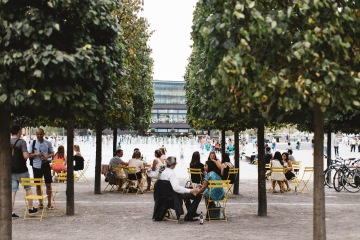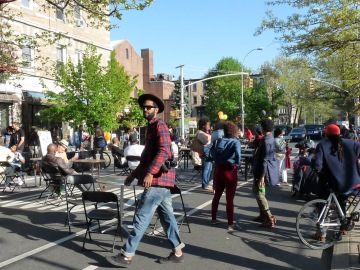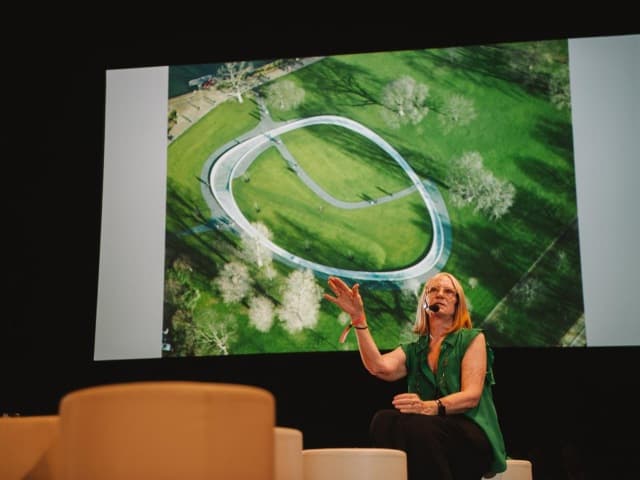
The Urban Paradox: More Compactness, Better Public Health?
Oxford University and UHK unveil in a study that compact cities can help people to be physically more active and socially engaged, thus, residential density can positively affect citizens' wellbeing.
“As cities get more and more compact, they become more walkable. In denser residential areas, they are better designed and more attractive destinations. We are less dependent on our cars and use public transport more,” Chinmoy Sarkar told the Thomson Reuters Foundation.
Chinmoy Sarkar is an assistant professor at the University of Hong Kong (UHK) and co-author of the report called "Association between adiposity outcomes and residential density." Together with Oxford University, they have recently published their research findings collected from 22 cities across the UK. They analyzed the association of obesity with residential density in British cities. Between 2006 and 2010, they conducted research with a large group of people (around half million men and women) and measured their activity-influencing built environment factors like residential density of retail, public transport, and street-level movement densities.
They argue that: "The residential built environment has been shown to be one of the first causes of obesity." And they also claim that "a density of 1800 residential units per km2, might have important public health consequences—especially in the identification of parameters for residential density" so that "...neighbourhoods with high residential density, street intersections, and services were associated with lower risks of obesity."
Then, what are the implications of their research from an urban health policy perspective? How should decison-makers rethink their policies towards healthy suburban densification? The researchers suggest that dense and compact environments, in general, help people to become physically more active and socially engaged. Therefore planners and policy makers should design multifunctional urban spaces, and support walkability via effective densification policies both in cities and suburbian environments. What does it mean for British cities? They explain as follows:
The findings might mean that governments, such as the UK Government, who are attempting to prevent suburban densification by, for example, prohibiting the subdivision of single lot housing and the conversion of domestic gardens to housing lots, will potentially have the effect of inhibiting the conversion of suburbs into more healthy places to live.
On the other hand, the research also underlines the fact that "The range of residential density available to the analysis was representative of the UK's semi-urban and urban environments. However, the findings should not be extrapolated beyond this range for other socially and culturally different contexts." So, it is significant to emphasize that comparable studies from other countries, for example highly dense Asian countries like China, India or Honk Kong, need to verify such findings in order to gain in-depth insights for global-scale policies aiming at healty densification urban environments.
Related Stories
Tell Us About Prague and New York
Martin Barry interview first published in November 2016 issue of the popular Prague-based online magazine Aktualne.cz.
Public Spaces and Waterfronts Not the Place for Advertising
“Ignoring the progress in sustainability, resilience and data-driven innovation would be like not paying attention to the Internet 25 years ago.” Martin Barry
Brooklynization, Gentrification and the Faces of the City
Gentrification is warfare. Gentrification is Racist. Gentrification is not Christian. Gentrification is Ruining Hip Hop. Gentrification is the New Colonialism.
What Does the Invisible City Mean to You?
Conversation between reSITE's Program Director Osamu Okamura & the Chairman Martin Barry about the theme and program of the sixth annual international reSITE conference and festival: the "Invisible City".
Related Talks
Samu Szemery on Infrastructure as the Commons of the Future
Samu Szemerey, founding member of KÉK Hungarian Contemporary Architecture Centre and the lead expert at Lechner Nonprofit Ltd., discusses barriers in urban infrastructure projects and how to avoid them. He uses architecture to assist in long term goals of cities of providing a higher quality of life and making the city work for the people in it.
Saskia Sassen: City is an Extraordinary Animal
Saskia Sassen, professor of sociology at Columbia University, discusses the migrant experience relating to land use and the urban habitat. She focuses on the privatizing and corporatizing of modern cities and how these trends affect the people living in cities, especially disadvantaged and ignored populations.
Superkilen and Multicultural Public Spaces with Martin Rein-Cano
Landscape architect Martin Rein-Cano discusses the integration of migrant communities in design for multicultural cities, highlighting his Superkilen park in Copenhagen. By incorporating physical items from local immigrant communities, Rein-Cano sought to develop a built environment directly reflecting the neighborhoods that surround the public park.
Kathryn Gustafson on The Art of Landscape Architecture
Co-founder of landscape architecture studio Gustafson Porter + Bowman, Kathryn Gustafson embodies the role of artistry through landscape architecture. Noting that art is often a reflection of the artists’ contemporary moment, Gustafson seeks to channel art through landscape design as a reflection of the world around.








